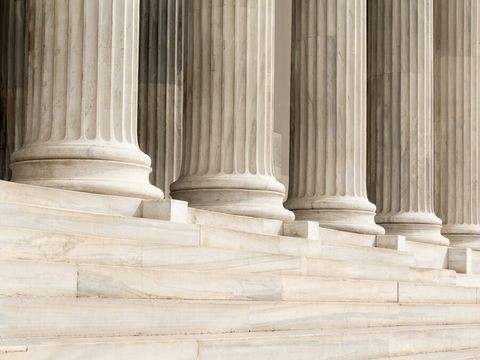Forget The Showers. April Brings Flurry of New Cyber Guidance.
Client Alert | 1 min read | 05.01.18
April has marked a busy month for those following the DoD’s approach to contractor cybersecurity. Earlier in the month, the DoD published a much-anticipated revision to their Frequently Asked Questions regarding DFARS 252.204-7012 and other cybersecurity requirements, reflecting feedback on various questions posed by industry over the past year and including new information regarding:
- COTS and commercial items
- Scope of covered defense information
- Conflicts with foreign laws
- Subcontractor flowdowns
- System security plans (SSPs) and plans of action & milestones (POAMs)
- Requirements for FIPS-validation, multifactor authentication, and marking
- Cybersecurity requirements beyond NIST SP 800-171
- Cloud service providers
- Examples of cyber incidents
- Guidance for small businesses
- DCMA oversight
Then just weeks later, the DoD issued proposed guidance for evaluating contractor cybersecurity, including implementation of NIST SP 800-171. Importantly, contractors may comment on the draft guidance through May 31 – and would be well-served to familiarize themselves with the new FAQs before doing so.
Contacts

Partner, Crowell Global Advisors Senior Director
- Washington, D.C.
- D | +1.202.624.2698
- Washington, D.C. (CGA)
- D | +1 202.624.2500
Insights
Client Alert | 5 min read | 12.12.25
Eleventh Circuit Hears Argument on False Claims Act Qui Tam Constitutionality
On the morning of December 12, 2025, the Eleventh Circuit heard argument in United States ex rel. Zafirov v. Florida Medical Associates, LLC, et al., No. 24-13581 (11th Cir. 2025). This case concerns the constitutionality of the False Claims Act (FCA) qui tam provisions and a groundbreaking September 2024 opinion in which the United States District Court for the Middle District of Florida held that the FCA’s qui tam provisions were unconstitutional under Article II. See United States ex rel. Zafirov v. Fla. Med. Assocs., LLC, 751 F. Supp. 3d 1293 (M.D. Fla. 2024). That decision, penned by District Judge Kathryn Kimball Mizelle, was the first success story for a legal theory that has been gaining steam ever since Justices Thomas, Barrett, and Kavanaugh indicated they would be willing to consider arguments about the constitutionality of the qui tam provisions in U.S. ex rel. Polansky v. Exec. Health Res., 599 U.S. 419 (2023). In her opinion, Judge Mizelle held (1) qui tam relators are officers of the U.S. who must be appointed under the Appointments Clause; and (2) historical practice treating qui tam and similar relators as less than “officers” for constitutional purposes was not enough to save the qui tam provisions from the fundamental Article II infirmity the court identified. That ruling was appealed and, after full briefing, including by the government and a bevy of amici, the litigants stepped up to the plate this morning for oral argument.
Client Alert | 8 min read | 12.11.25
Director Squires Revamps the Workings of the U.S. Patent Office
Client Alert | 8 min read | 12.10.25
Creativity You Can Use: CJEU Clarifies Copyright for Applied Art
Client Alert | 4 min read | 12.10.25
Federal Court Strikes Down Interior Order Suspending Wind Energy Development



